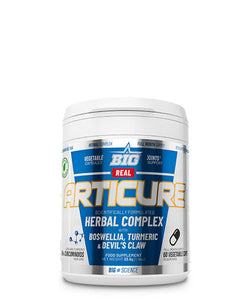
How to stop being a plaster cat
Sergio Guerrero
INTRODUCTION
In this new entry and taking advantage of the fact that in the last one we discussed curcumin, today we will address the rest of the ingredients that make up Real Articure .
Among the ingredients that we will discuss in this article are bromelain, boswellia serrata and harpagofito , all of these ingredients together with curcumin offer benefits in the prevention and recovery of joint pain , thanks to its anti-inflammatory effect.
MECHANISM OF ACTION
· BROMINELINE
Bromelain is a blend of protein-digestive enzymes derived from the stem, fruit, and juice of the pineapple plant. Despite this, eating pineapple or drinking its juice does not provide a large enough dose to be effective.

- Figure 1: Effect of bromelain on acute inflammation.
It is most commonly used as an anti-inflammatory agent , although science has also discovered its potential as an anticancer and antimicrobial agent . It has been reported to have positive effects on the respiratory, digestive and circulatory systems, and potentially the immune system. It is a natural remedy to relieve arthritis symptoms, including joint pain and stiffness .

- Figure 2: Summary of the therapeutic effects of bromelain.
Bromelain selectively inhibits the biosynthesis of proinflammatory prostaglandins , apparently by indirect action. Prostaglandins are a set of lipid substances derived from fatty acids that are involved in the inflammatory response.
The inhibition of endogenous proteases that accompanies trauma or prolonged exposure to excessive stress markedly elevates the relative proportions of prostaglandins responsible for the symptoms of inflammation. The specificity of bromelain has been shown to be similar to that of the endogenous plasmin protease. Bromelain acts on fibrinogen to give products similar to those formed by plasmin . Fibrinogen is the protein responsible for clot formation, while plasmin is the enzyme responsible for clot dissolution.
These products formed by the ingestion of bromelain are active peptides of small molecular weight, which regulate the biosynthesis of prostaglandins, thus creating the conditions existing in a healthy organism .
A substantial portion of orally administered bromelain has been shown to be absorbed intact into the bloodstream , thereby elevating the proteolytic and fibrinolytic activity of the blood for hours. This means that it has anticoagulant and protein turnover-regeneration effects.
The body can absorb a significant amount of bromelain; About 12 g/day of bromelain can be consumed without significant side effects. Bromelain is absorbed from the gastrointestinal tract in a functionally intact form.
The similarity between the beneficial effects of medications such as aspirin and bromelain are disparate, and is that bromelain does not cause any of the undesirable side effects of the latter, thus suggesting that bromelain acts on the prostaglandin synthesis pathway. in a different site than that affected by non-steroidal anti-inflammatory drugs (NSAIDs).
BOSWELLIA SERRATA
Boswellia, also known as Indian frankincense, is an herbal extract extracted from the Boswellia serrata tree.
Resin made from boswellia extract has been used for centuries in Asian and African folk medicine, primarily to treat chronic inflammatory diseases as well as other health conditions (Fig.5).
Some research shows that boswellic acid can prevent the formation of leukotrienes in the body. Leukotrienes are molecules that have been identified as causing inflammation. In addition to boswellic acid, there are other types of acids (Fig. 3) capable of contributing to anti-inflammatory responses. The most studied and apparently most powerful is acetyl-11-keto-β-boswellic acid (AKBA). acronym in English).

- Figure 3: Main acids of Boswellia Serrata.
Its main mechanism of action, but not the only one (Fig. 4), is to inhibit 5-lipoxygenase (5-LO), an enzyme that produces leukotrienes, which, as we said previously, are molecules that cause inflammation.

- Figure 4: Molecular targets of Boswellic Acids and their analogues and Figure 5: Biological activities of Boswellic Acids against various chronic diseases.
· HARPAGOPHITE
Native to southern Africa, the devil's claw ( Harpagophytum procumbens ) gets its name from the tiny hooks that cover its fruit. Historically, devil's claw has been used to treat pain, liver and kidney problems, fever, and malaria .
It was introduced to Europe in the early 20th century, where the dried roots have been used to restore appetite, relieve heartburn, and reduce pain and inflammation. Today, devil's claw is widely used in Germany and France to combat inflammation or relieve pain from arthritis, headaches, and lower back pain .
In particular, devil's claw contains iridoid glycosides, a class of compounds that have demonstrated anti-inflammatory effects. The major iridoid is harpagoside .

- Figure 6: Chemical composition of Harpagophytum procumbens.
Regarding its mechanism of action, harpagoside, both as a pure compound and as the main component of harpagofito extracts, exerts anti-inflammatory activities in clinical studies through the inhibition of COX-2 expression, iNOS activity and/or the nuclear translocation* of NF-κB, and the subsequent reduction in the production of inflammatory mediators. This sounds like a medical book, what does it mean? Well, let's start one by one, without going into too much depth, but so that it is well understood:
- COX-2: Enzyme that accelerates the formation of substances that cause inflammation and pain.
- iNOS: It is one of the three key enzymes that generate nitric oxide (NO) from the amino acid L-arginine. iNOS-derived NO plays an important role in numerous physiological and pathophysiological conditions, for example, blood pressure regulation, inflammation, infection, and the onset and progression of malignant diseases.
- NF-kB (nuclear factor kappa light chain enhancer of activated B cells): A group of proteins that help control many functions in the cell, such as growth and survival. These proteins also control immune and inflammatory responses.
*Nuclear translocation: It is a change of location. It generally refers to genetics, when part of one chromosome is transferred to another chromosome.

- Figure 7: Proposed molecular mechanism of action of harpagosides and standardized extracts of Harpagophytum.
MAIN USES AND DOSAGE
BROMINELINE
Osteoarthritis
In a review of clinical studies conducted in 2004 by Brian, S. et al. found that bromelain's anti-inflammatory and analgesic properties make it an effective treatment for pain, soft tissue inflammation, and joint stiffness associated with osteoarthritis.
The review focused on the effectiveness of bromelain in treating arthritis of the knee and shoulder. The studies analyzed varied significantly in terms of dosage. Improvements were found in some study participants who received 400 milligrams of bromelain, twice a day.
Cardiovascular disease
A review of Pavan. R. et al., in 2012 reported that bromelain was effective in treating cardiovascular diseases, such as peripheral arterial disease, stroke, heart attack, and high blood pressure. Bromelain inhibits the ability of blood platelets to stick together or clump together (aggregation). This can help reduce clot formation and cardiovascular events.
Dose
Bromelain is measured in gelatin digestion units (GDU) per gram. Doses range from 80 to 400 milligrams per serving, two or three times a day, depending on the context.
Side effects
Regarding side effects , patients who take: anticoagulants, antibiotics, sedatives and people allergic to pineapple or any of its components should pay special attention.
BOSWELLIA SERRATA
Studies show that boswellia can reduce inflammation and may be helpful in treating the following conditions:
- osteoarthritis (OA)
- rheumatoid arthritis (RA)
- asthma
- inflammatory bowel disease (IBD)
Because boswellia is an effective anti-inflammatory, it can be an effective pain reliever and can prevent cartilage loss.
Dose
General dosing guidelines suggest taking 300 to 500 milligrams (mg) by mouth two to three times a day . The dose may need to be higher for IBD.
The Arthritis Foundation suggests 300 to 400 mg three times a day of a product containing 60% boswellic acids.
Side effects
Boswellia can stimulate blood flow in the uterus and pelvis. It can speed up menstrual flow and may induce miscarriage in pregnant women. Other possible side effects of boswellia include: nausea, acid reflux, diarrhea, or skin rashes.
Boswellia extract may also interact with medications, including ibuprofen, aspirin, and other nonsteroidal anti-inflammatory drugs (NSAIDs).
All of these effects will depend on the doses taken and the recommended guidelines.
HARPAGOPHITE
Devil's claw has favorable studies for the treatment of inflammation, gout, and for the treatment of joint pain . A clear example of this is a study published in 2002 by Chrubasik, S et al., where 227 people with nonspecific low back pain or osteoarthritis (OA) of the knee or hip treated with devil's claw extract were recruited. After eight weeks of taking 60 mg daily, 50 to 70 percent of people reported improvement in pain, mobility, and flexibility.
Dose
Doses of 600 to 2,610 mg of devil's claw per day have been used in studies for osteoarthritis and back pain . Depending on the concentration of the extract, this normally corresponds to 50-100 mg of harpagosides per day .
Additionally, a supplement called AINAT has been used as a remedy for osteoporosis. AINAT contains 300 mg of devil's claw, as well as 200 mg of turmeric and 150 mg of bromelain, two other plant extracts believed to have anti-inflammatory effects.
The Arthritis Foundation suggests between 750 mg to 1000 mg three times a day. As always, it will depend on the context to use some doses or others.
Side effects
When taken at doses up to 2610 mg per day, it appears safe although long-term effects have not been investigated. Reported side effects are mild , the most common being diarrhea. More rare adverse effects include allergic reactions, headache and cough.
Patients with: cardiovascular disorders, diabetes, gallstones, stomach ulcers, patients who chronically take anticoagulants, non-steroidal anti-inflammatory drugs and stomach acid reducers, among others, should pay special attention.
For most people, the risk of devil's claw side effects if proper guidelines are followed is low .
REFERENCES
- Brien S, Lewith G, Walker A, Hicks SM, Middleton D. Bromelain as a Treatment for Osteoarthritis: a Review of Clinical Studies. Evid Based Complement Alternat Med. 2004 Dec;1(3):251-257. doi:10.1093/ecam/neh035. Epub 2004 Oct 6. PMID: 15841258; PMCID: PMC538506.
- Chakraborty, AJ, Mitra, S., Tallei, TE, Tareq, AM, Nainu, F., Cicia, D., Dhama, K., Emran, TB, Simal-Gándara, J., & Capasso, R. (2021 ). Bromelain a Potential Bioactive Compound: A Comprehensive Overview from a Pharmacological Perspective. Life, 11.
- Chrubasik S, Thanner J, Künzel O, Conradt C, Black A, Pollak S. Comparison of outcome measures during treatment with the proprietary Harpagophytum extract doloteffin in patients with pain in the lower back, knee or hip. Phytomedicine. 2002 Apr;9(3):181-94. doi:10.1078/0944-7113-00140. PMID: 12046857.
- Conrozier T, Mathieu P, Bonjean M, Marc JF, Renevier JL, Balblanc JC. A complex of three natural anti-inflammatory agents provides relief of osteoarthritis pain. Altern Ther Health Med. 2014 Winter;20 Suppl 1:32-7. PMID: 24473984.
- Conrozier T, Mathieu P, Bonjean M, Marc JF, Renevier JL, Balblanc JC. A complex of three natural anti-inflammatory agents provides relief of osteoarthritis pain. Altern Ther Health Med. 2014 Winter;20 Suppl 1:32-7. PMID: 24473984.
- Gagnier JJ, Oltean H, van Tulder MW, Berman BM, Bombardier C, Robbins CB. Herbal Medicine for Low Back Pain: A Cochrane Review. Spine (Phila Pa 1976). 2016 Jan;41(2):116-33. doi: 10.1097/BRS.0000000000001310. PMID: 26630428.
- Georgiev, Milen I.; Ivanovska, Nina; Alipieva, Kalina; Dimitrova, Petya; Verpoorte, Robert (2013). Harpagoside: from Kalahari Desert to pharmacy shelf. Phytochemistry, 92(), 8–15. doi:10.1016/j.phytochem.2013.04.009
- Harty, PS, Cottet, ML, Malloy, JK, & Kerksick, CM (2019). Nutritional and Supplementation Strategies to Prevent and Attenuate Exercise-Induced Muscle Damage: a Brief Review. Sports medicine - open, 5(1), 1. https://doi.org/10.1186/s40798-018-0176-6
- https://flipper.diff.org/app/items/6943
- https://www.arthritis.org/health-wellness/treatment/complementary-therapies/supplements-and-vitamins/supplement-and-herb-guide-for-arthritis-symptoms
- Pavan, R., Jain, S., Shraddha, & Kumar, A. (2012). Properties and therapeutic application of bromelain: a review. Biotechnology research international, 2012, 976203. https://doi.org/10.1155/2012/976203
- Roy, N.K.; Parama, D.; Banik, K.; Bordoloi, D.; Devi, A.K.; Thakur, K. K.; Padmavathi, G.; Shakibaei, M.; Fan, L.; Sethi, G.; Kunnumakkara, AB An Update on Pharmacological Potential of Boswellic Acids against Chronic Diseases. Int. J. Mol. Sci. 2019, 20, 4101. https://doi.org/10.3390/ijms20174101
- Siddiqui MZ (2011). Boswellia serrata, a potential antiinflammatory agent: an overview. Indian journal of pharmaceutical sciences, 73(3), 255–261. https://doi.org/10.4103/0250-474X.93507
- Viljoen A, Mncwangi N, Vermaak I. Anti-inflammatory iridoids of botanical origin. Curr Med Chem. 2012;19(14):2104-27. doi: 10.2174/092986712800229005. PMID: 22414102; PMCID: PMC3873812.




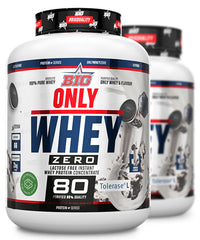
![CREABIG [Creapure®]](http://bigsupps.site/cdn/shop/products/producto_BIG_creabig_creapure_250g_0noflavour_500x600_8c48a126-a2a2-46a5-9bbd-8763ab82d768_200x.jpg?v=1757315967)
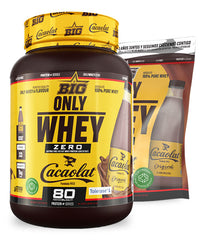
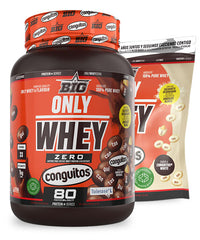
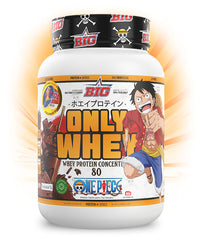
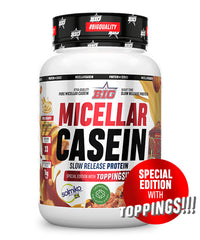
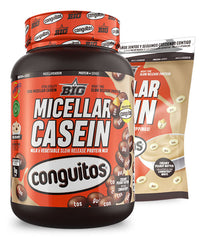
![CFM ISO ZERO [saco]](http://bigsupps.site/cdn/shop/files/producto_cfm_doypack_0noflavour_500x600a_200x.jpg?v=1750981452)
![CLEAR ISO ZERO [750g]](http://bigsupps.site/cdn/shop/files/producto_BIG_clearprotein_icepop_0noflavour_500x600a_200x.jpg?v=1757074297)
![CREABIG FIESTA® KOJAK® flavor - [250g]](http://bigsupps.site/cdn/shop/files/producto_BIG_creabig_kojak_0noflavour_500x600a_200x.jpg?v=1763548822)
